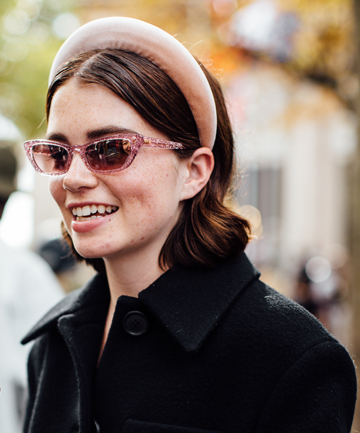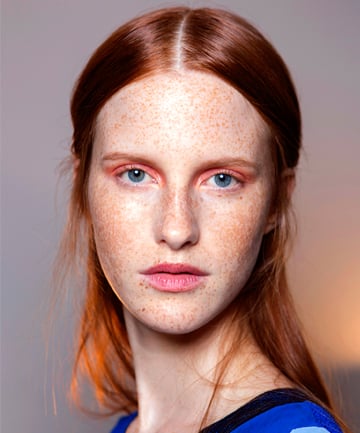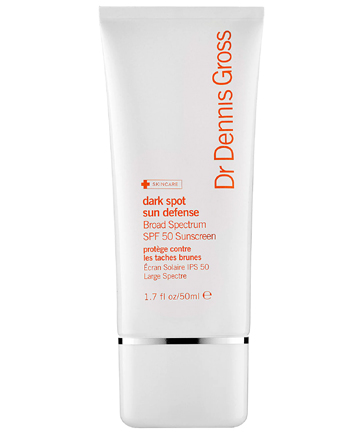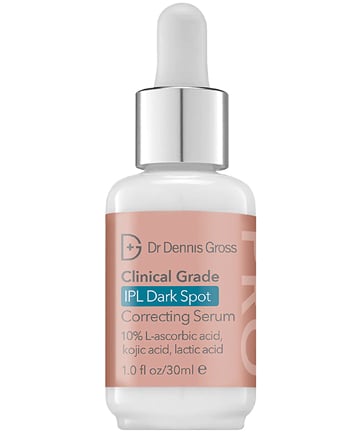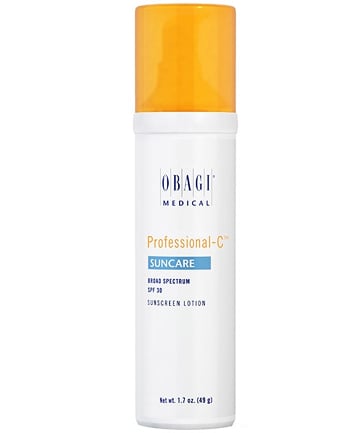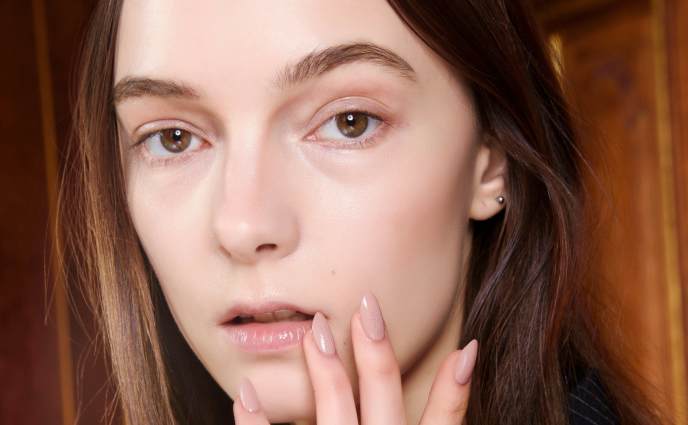Like acne, hyperpigmentation is a common skin affliction without a straightforward solution. In short, it's a condition by which patches of skin become darker in color than the normal surrounding skin and, once again like acne, it can have various causes. Some of the most common include melasma, sun spots and age spots.
"70 percent of my patients have some form of hyperpigmentation," says renowned dermatologist (and founder of the eponymous skin care line), Dr. Dennis Gross. "This darkening occurs when excess melanin forms deposits in the skin. There are many factors that cause hyperpigmentation including hormones, environmental aggressors like sun exposure or pollution and skin injury resulting from things like acne."
So how can we figure out what type of hyperpigmentation we have? And how do we treat them? Here, Dr. Gross breaks down the most common hyperpigmentation causes, as well as the most effective solutions.
Image via Imaxtree
"This is patches of discoloration caused by hormones. Women are much more likely to develop melasma than men. Many women experience melasma for the first time during pregnancy or when starting birth control — it typically is visible on the forehead, cheeks, upper lip, nose and chin. Sometimes it will fade on its own, other times it can be more stubborn. Melasma spots can darken in the sun, so it is really important to wear SPF when trying to fade this type of discoloration."
Image via Imaxtree
While many think strong in-office treatments are needed to ward off discoloration, most people can actually start off by opting for over-the-counter remedies like the Dr. Dennis Gross Clinical Grade IPL Dark Spot Correcting Serum, $92. "It's formulated with pure l-ascorbic acid, alpha hydroxy acids and kojic acid to remove over-pigmented surface cells, clear and illuminate skin tone and fight against environmental aggressors," explains Dr. Gross. "It has been proven to work better than prescription grade hydroquinone without any of the side effects that hydroquinone is known to have (i.e. redness, sensitivity, irritation)."
Dr. Gross says it's now his go-to, over prescription for hydroquinone. "Hydroquinone can be really irritating and can actually backfire if you're not careful by causing post inflammatory hyperpigmentation — meaning you get worse dark spots than before using it." He recommends using the IPL serum for eight weeks and then going to see your dermatologist. "Even if you go in for a professional treatment, using the serum in conjunction will help prevent new spots from forming. Professional treatments are only corrective, not preventative."
Speaking of prevention, depending on the type of hyperpigmentation you're dealing with, there may not be all that much that you can actually do. "Unfortunately there's not much you can really do about most hormonal changes that cause melasma, however, you can wear SPF daily and use other protective gear like hats to prevent the darkening of melasma spots. Incorporate a vitamin C serum into your regimen to help protect skin against damaging free radicals," says Dr. Gross.
As for sun and age spots the number one tip: wear SPF and make sure you're using it on anywhere that is exposed to the sun — not just your face. "I recommend a physical SPF of at least 30 SPF — it works as a physical blocker and prevents UVA/UVB damage which is what causes sun/age spots to appear."


